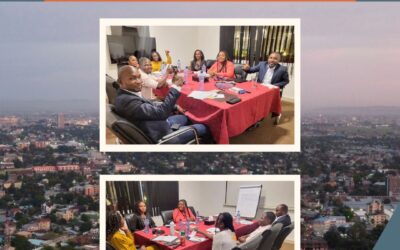I believe today holds the promise of being a transformational moment in the history of the modern anti-slavery movement. This moment occurred in a large, nondescript room in an annex to the U.S. State Department located on G Street in Washington, far removed from the majesty of the main State building. I had the privilege this morning of attending the launch of a new U.S. anti-slavery grant program popularly known as the End Modern Slavery Initiative (EMSI). EMSI was passed by Congress late last year after the election and signed into law by President Obama. The purpose: “provide support for transformational projects and programs that seek to achieve a measurable and substantial reduction of the prevalence of modern slavery in targeted populations within partner countries or jurisdictions thereof.”
The meeting was chaired by U.S. Trafficking in Persons (TIP) Ambassador Susan Coppedge. The opening was given by Sen. Bob Corker (R-TN), chair of the Senate Foreign Relations Committee, who spoke with great conviction and deep emotion about the horrors of slavery and the opportunity to finally rectify this scourge. He said that EMSI is the vehicle by which the United States can show global leadership on slavery eradication as it has on HIV/AIDS, polio, malaria and other issues.
EMSI’s core strategy is to leverage U.S. funds to greatly multiply the resources available to the anti-slavery movement. In this first year, the U.S. government has appropriated $25 million. The legislative intent is to support a foundation that will secure $50 million in matching funds from other governments and $75 million from the private sector. This means that $150 million of new money would become available to the anti-slavery field. Over seven years, the U.S. government is to appropriate $250 million with the same match requirements. If successful, this would yield $1.5 billion in funds for anti-slavery programs. My view is that these are eminently achievable goals. Our movement would finally begin to have the resources needed to fight back on even footing with the traffickers and slaveholders.
Free the Slaves was part of the advocacy group that supported the creation of EMSI. And at today’s event, we took advantage of an invitation from the TIP Office to comment on the design of the new initiative. Here is a portion of what I said, noting the need for balance, collaboration and discovery:
Balance: Free the Slaves believes a balance of approaches should mark the initiative, including community empowerment, supply chain strategies and ending impunity. Community empowerment redresses the core vulnerabilities in the villages and neighborhoods most afflicted by human trafficking and thereby reduces the supply of vulnerable labor. Supply chain strategies alter the incentives and skills of business, increasing the likelihood they will act aggressively to root out slavery in the production process. Ending impunity is about increasing the risk and cost to individuals, non-state actors and states of engaging in human trafficking. Justice for survivors figures prominently in all these approaches, including survivor services, compensation, protection and leadership. All are critical and the new anti-trafficking initiative should sustain a multi-pronged strategy. Balance is important with regard to the type of trafficking. Trafficking manifests in many, equally repugnant forms, including sex trafficking, forced labor and child trafficking. The initiative should be comprehensive in its approach and responsive to context-specific data on the types of slavery in a given population. Lastly, there should be geographic balance that recognizes trafficking is a global problem. The distribution of initiative resources as among nations should reflect the best available information about the magnitude and severity of trafficking across countries.
Collaboration: The Notice [calling for public comment] asks how the initiative can best complement existing anti-trafficking programs. We suggest that initiative funds reward collaboration among anti-trafficking organizations. We also strongly encourage using initiative funds to bring new, important players into the anti-trafficking movement through partnerships with existing anti-trafficking organizations. Conversely, we strongly discourage grants that simply create transient consortia created for the purposes of securing a grant.
Discovery: The initiative should support discovery. Our collective understanding of trafficking and effective anti-trafficking approaches has improved greatly over the last 15 years. However, huge gaps in knowledge remain. We believe that grants should integrate three types of research. First, context-specific prevalence studies of the magnitude, type and dynamics of trafficking that can help guide intervention design and provide the baseline for assessing impact. Second, studies of the determinants of trafficking that can help with the design of policy and programs. Sweeping assertions that poverty and inequality are the root causes of trafficking are unhelpful, provide little to no guidance on policy and program design and allow almost any intervention to be claimed as an anti-trafficking program. More precise understanding of the factors that most drive trafficking would help focus anti-trafficking interventions on what will have the greatest impact. Closely linked is a third area for discovery, which is rigorous evaluation of interventions using quasi-experimental and other appropriate research designs.
As EMSI unfolds, it will be very important that Free the Slaves play its part, participating and contributing to this very bold, marvelous new initiative. We will, and I will keep you informed.
The arc of the modern anti-slavery movement is quite remarkable and we must keep in mind the very significant progress that has been achieved. Today is another milestone.



